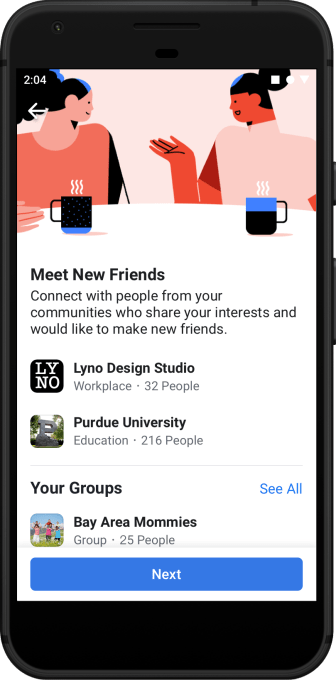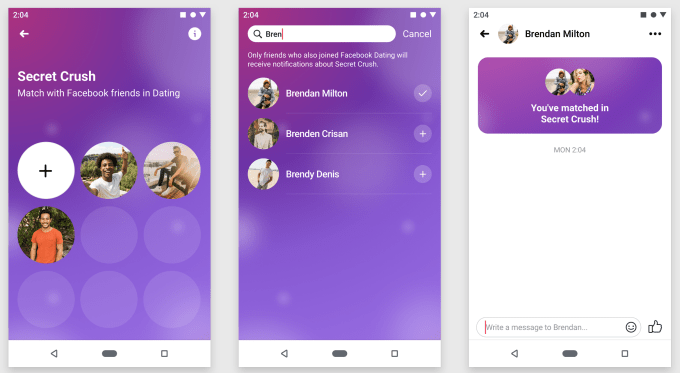Remember Prisma? The Moscow-based team behind the app that sparked a style transfer craze in 2016 has raised a €6 million (~$6.7M) Series A, led by early stage artificial intelligence focused VC firm, Haxus.
While two of Prisma’s original co-founders left the company in the middle of last year, to work on building a new social app — the still, as yet, unreleased Capture — co-founder Andrey Usoltsev stayed on to keep developing Prisma Labs, taking up the CEO role.
The Series A funding will go towards expanding Prisma’s 21-strong team and scaling the business by spending on marketing to grow uptake of its apps’ premium subscription offers. These include a subscription layer for its eponymous app which gives users access to styles not available in the free version.
“We’re going to grow rapidly. We’re going to double our team this year and set up the impressive marketing budget,” says Usoltsev.
Late last year the team released a new freemium selfie retouching app, called Lensa, hoping to capture a slice of the beauty filter/photo-editing market. Their twist was to bake in AI smarts that power automatic adjustments — smoothing skin tone, whitening teeth, brightening eyes and so on, at the touch of the in-app camera button — as if by technomagic.
Their pitch for the selfie retoucher is ‘natural’ looking enhancements. And Prisma claims it’s seeing “very high” retention rates for Lensa, more akin to a sticky social network than photo-retouching software.
They argue the app’s face-retouching machine learning algorithms have benefited from the heap of data amassed from Prisma’s multi-millions of selfie-submitting users. And while there’s certainly no shortage of rival apps out there claiming to make selfies look better, Lensa’s AI-powered retouching does offer — at a glance — less crude/more plausible results than plenty of gimmicky ‘beauty filter’ apps also touting reality-editing wares.
“There is competition [for selfie retouching] and we think that it is good because it shows the size of the market,” says Usoltsev. “It’s huge. There are millions of people using apps like Facetune and what our advantage is is that we have a great technical team, R&D team that creates the best technology on the market in some areas… that trained building Prisma.
“We’re focusing on the quality and the natural look of the results. And some apps on the market didn’t pay as much attention as needed to these two things. We’re going to focus on this. We are not the first in this space but we are going to be the best in this space.”
“Automation is the key,” he adds. “We can now provide users with new kind of product, new kind of photo- and video-editors that automate the routine and requires less effort from the user side to get awesome results.”
Lensa, which launched in December with a subscription offering right off the bat, now has more than 100,000 users, according to Usoltsev — though it’s not breaking out paying subs yet.
The early userbase skews female and young — without, according to Usoltsev, Prisma doing any overt targeting — the main group being 18-24 year old women, somewhat unsurprisingly for a selfie beautifying app.
“The product is not viral, like Prisma, and most of the users are acquired from paid sources like Facebook ads and so on so. We strongly control the amount of users we acquire and now the product is not ready for the real scale,” he continues, noting they’re in the process of tweaking the app to expand the features and improve product market fit.
They’re also playing with the business model, with the initial subscription offering definitely feeling a bit underwhelming vs the core free AI-powered edits. (You can read our first look at Lensa here.)
“Right now we’re very close to start scaling it,” he adds. “We need a couple of more releases to be ready 100% and then we start scaling.
“We’re going to expand the range of features. We’re going to add a video feature because our primary feature — retouching — works in real-time and we tested it even on livestreaming and it works well. We’re working on optimizing it even more, to work faster, and in better quality.”
Other ongoing dev work to polish Lensa’s proposition includes tweaking the auto-adjustments it makes by determining the best settings for portrait-influencing factors, such as exposure, contrast, highlights and shadows. “For each adjustment we use a neural network,” he notes. “They work together… to find the best output result.”
Prisma is also monetizing its namesake original app — which grabbed around 70M downloads in a few months back in 2016, with Usoltsev saying they’re still relying mostly on organic/viral downloads rather than active promotion, riding the Prisma craze’s long viral tail.
They now have more than 100,000 paying subscribers for Prisma, though they’re not breaking out active usage — beyond saying it runs into the “millions”. (Back in 2017 they were reporting active monthly usage for the app of around 10M.) A premium sub offering was switched on in Prisma in January 2018.
“The paying audience is actually diverse. The major group by age I think it’s 24-35 year olds. And men and women is about the same proportion,” he adds.
Last year’s launch of Lensa came despite an earlier focus shift for the startup to b2b, after the style transfer craze that had powered its namesake app’s 2016 virality appeared on the cusp of being crazed (and, well, cloned) to death.
The plan, as it was in 2017, was for Prisma Labs to offer an SDK for computer vision-powered effects that developers could use to enhance their own apps. But the team kept its hand in the consumer space, maintaining their apps as testing grounds. A decision that set them up for what now looks a full reverse pivot back to consumer.
Usoltsev tells us the earlier b2b switch was “mostly” at the behest of Prisma’s investors — and wasn’t something the wider team was keen on.
They’re fully stoked to get back to their consumer roots, he adds.
“It didn’t really resonate with our team experience and our company DNA,” he adds of the b2b phase. “But in the process we figured out this is not what we want to do. We came up with the idea for the new product in the process and came up with the broader vision for the entire company and what we want to do.
“The core team was all about consumer products and b2b was not seen as interesting topic at all.”
So what’s on the slate for the future, as the team thinks about other features and/or consumer apps it might want to launch this year?
“Right now we’re thinking a lot about video,” he says. “Video is so fast growing space right now and we see a lot of new apps that break into the market — like TikTok — that grows insanely and based on video. And we’re going to provide users with automated tools to enhance their videos.
“Videos is more complicated to edit than photos because it requires more skill… to learn how to edit videos. And if your clip is longer than one minute it’s so hard to create it because montage could be a boring process and the longer the video is the more complicated the process is. So we’re going to fix this — and provide users with automated tools to help them create great videos quickly and with no effort, or as little as possible.”
AI-enabled auto video editing is “probably” going to be a standalone app, he says, rather than a feature baked into one of Prisma’s existing apps. But, well, watch this space.

from Social – TechCrunch https://tcrn.ch/2V5eO5V
via
IFTTT

















 Fidji Simo, the head of Facebook’s main app, tells me Meet New Friends was based on emerging behaviors the company had spotted. “Developing relationships with people they didn’t already know is very different from the core use case of Facebook,” but she notes, “We’ve already seen that naturally happen in Groups, and Meet New Friends will make that a bit easier.”
Fidji Simo, the head of Facebook’s main app, tells me Meet New Friends was based on emerging behaviors the company had spotted. “Developing relationships with people they didn’t already know is very different from the core use case of Facebook,” but she notes, “We’ve already seen that naturally happen in Groups, and Meet New Friends will make that a bit easier.”




























